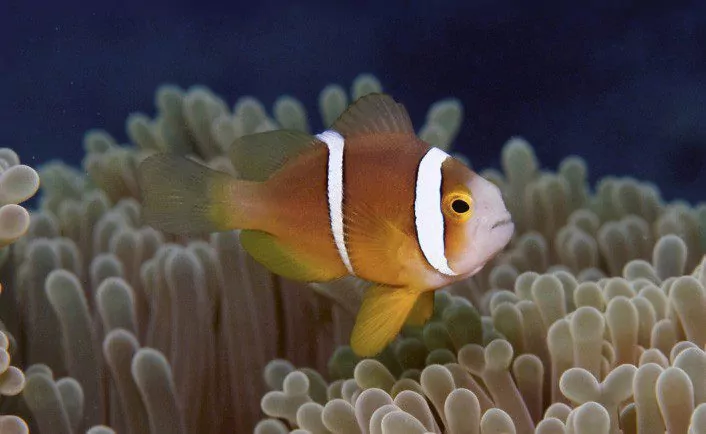DIVING NEWS
Bright lights kill Nemo

Orange-fin clownfish in its host anemone Heteractis magnifica. (Picture: Fred Zuberer)
The closer to shore young anemonefish live, the faster they are likely to die as the result of exposure to artificial lighting, according to an international research team.
The scientists from the UK, France, Chile and Australia were studying orange-fin anemonefish (Amphiprion chrysopterus), also known as bluestripe or orange-fin clownfish, on reefs around the island of Moorea in French Polynesia.
They found that not only did nearshore juvenile clownfish living in anemones under lights have higher mortality than others not exposed, but that the surviving fish grew 44% more slowly than those living in natural light.
Marine ecologist Prof Stephen Swearer of the University of Melbourne explained that the team exposed 42 clownfish in their host anemones to either artificial light at night (ALAN) or natural light in the lagoon. They monitored them for almost two years, identifying survivors and measuring their growth.
“The impacts of light pollution found here are probably under-estimated, and mitigation measures and policy changes are urgently required,” he said.
Lead author Jules Schligler from EPHE at the University of Paris and the Centre of Island Research & Environmental Observatory said that clownfish living in shallow coastal waters are highly sedentary and can be easily impacted by light from street-lamps, piers or ports at night.
“As with many other reef fish, clownfish feed, reproduce, defend their territories and interact with other fish during the day and reset while sleeping at night,” he said.
“However, 36% of the clownfish exposed to light pollution were more likely to die than fish under natural light cycles. Like humans, fish need a period of inactivity, which is crucial for their well-being.”
9 August 2021
“This is the first time that the impacts of ALAN have been tested on a coral-reef fish in the wild and over such a long time,” said Daphne Cortese of the University of Glasgow.
“As 12% of all coral-reef fish live in close association with another sedentary species, such as a coral or anemone, light pollution could already be having severe negative impacts on a fifth of fringing-reef fish populations.”
The study is published in proceedings of the Royal Society B.

